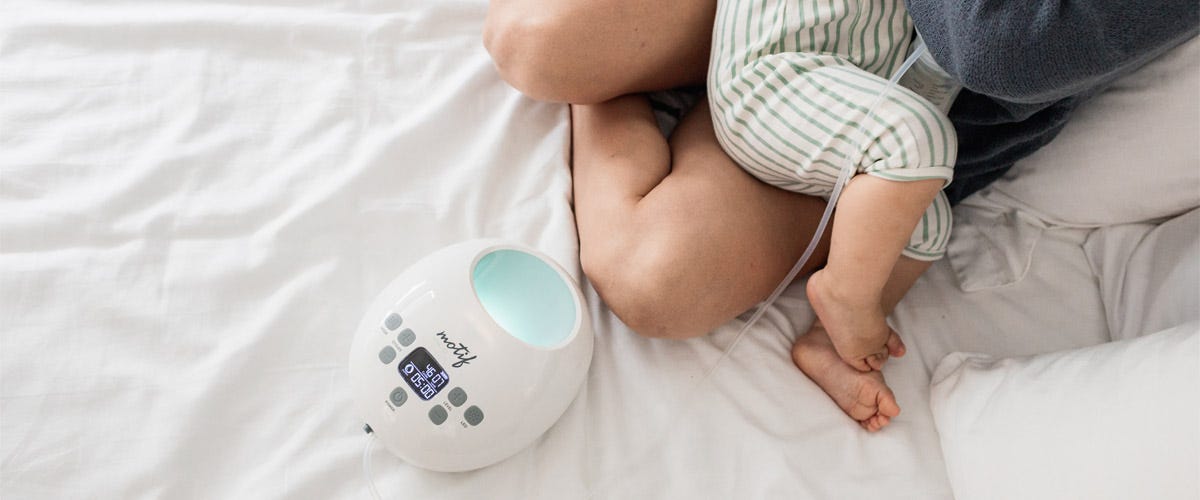While it's true that breast milk transitioning may be delayed and that it can be uncomfortable to nurse after having abdominal surgery, there are ways to encourage timely transitioning of mature milk and improved comfort in positioning.
Encouraging Milk Production
Discuss plans to initiate breastfeeding with the health care provider - this includes your preference for the first hour, or "Golden Hour." The assistance of a family member may be allowed in the operating room to help hold the baby on mom’s chest instead of having to wait for the recovery room and pain medication to wear off.
Skin-to-skin contact - whether immediately or as soon as possible, this practice of placing baby tummy-to-mommy without any clothing that could interfere encourages healthy maternal blood pressure, lowers stressors in both mom and baby, as well as regulates infant temperature and the rooting/nursing reflexes.
Offer the breast anyway - colostrum comes in small amounts, and mature milk supply does not typically come in for 3-5 days. Point being, you may not “feel” milk in the breasts in the early days, but the stimulation provided by baby suckling and kneading will only encourage the healthy transitioning.
Hand expression - the familiarity of physical touch, and location of colostrum being easier to express by hand, encourages the body to be responsive and transitional. This is especially useful if direct breastfeeding is not immediately doable or within the first 30 minutes after birth. Be sure to save any expressed colostrum for the baby.
Spoon and syringe feeding - if unable to feed or always feed from the breast initially, keeping the feeding pace slow and in small, frequent amounts keeps baby from overfeeding, which in turn takes the pressure off of the mother to keep up with unrealistic pace of milk flow of bottles and amounts from feeding at the breast, leading to unnecessary supplementation, which is less time at the breast.


Rooming in with baby - while many hospitals have removed the mandatory nursery stay, some still practice it. It's important to speak up ahead of time and in the moment to have the baby stay in the same room throughout c-section recovery. Just like women can share hormones to end up on the same menstrual cycle, mother and baby share hormonal signals being in the same room postpartum. This encourages milk production and responsiveness as well as fewer missed hunger cues to feed on demand.
Finding a Comfortable Breastfeeding Position
Having a c-section is a major surgery, cutting through several layers of tissue. This may be why it is very uncomfortable for breastfeeding mothers having a baby lay on or push their legs on the area while nursing! Finding a comfortable position while you heal will help you keep up with baby's demands and enhance your early breastfeeding experience.
Football Hold
This positions baby to the SIDE versus being right on top of the stomach. Propping a pillow under the mother’s arm will help keep comfortable. Remember the baby needs to be turned toward the mother, not lying flat on the back, as this will help baby latch more comfortably, versus having to turn the head which can make swallowing difficult.
Side-Lying Position
This breastfeeding position works really well for any type of birth, taking pressure off of the healing perineum from vaginal births, and off of the incision for cesarean births. The side laid on is the side of breast nursed from. Tuck the arm from the same side under the pillow, and lay baby on his/her side, nose to nipple, tummy to mommy.
About the Author
Ashley Georgakopoulos is an International Board Certified Lactation Consultant (IBCLC) that specializes in the clinical management of breastfeeding and an expert in the field of lactation. Ashley is from Knoxville, TN, and is a mother who has dealt with the obstacles and joys of breastfeeding. As the owner of Genesis Lactation, she educates families, connects them to resources, and helps the next generation be as healthy as possible: nutritionally and sustainably.








